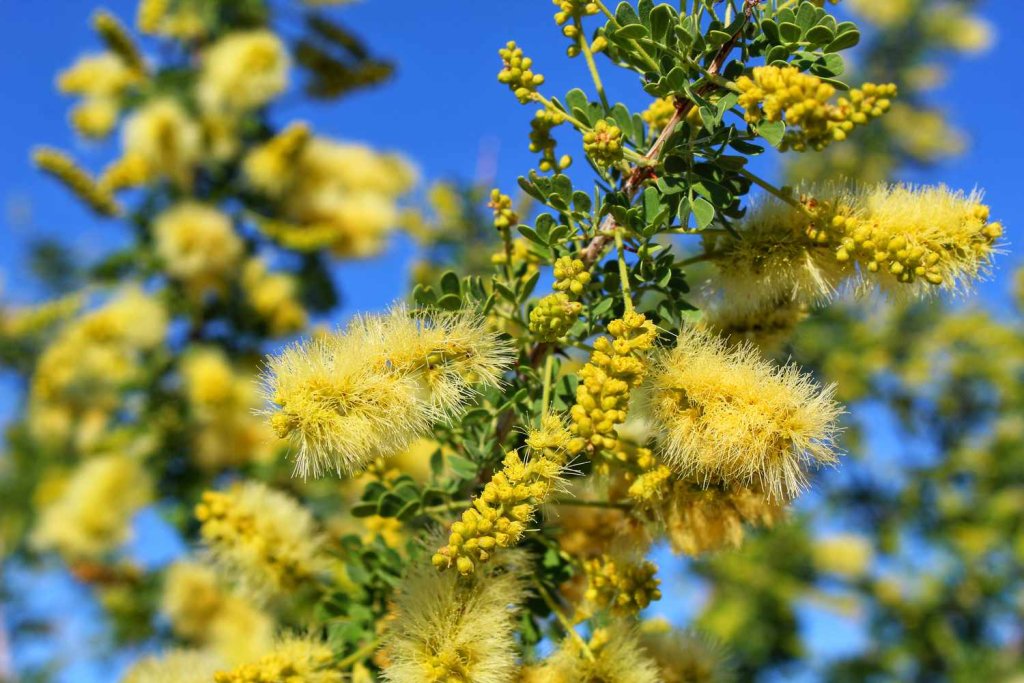Desert trees, known for their remarkable ability to thrive in hot, arid, and unforgiving environments, bring life and resilience to some of the driest regions on Earth.
In the world of flora, they stand as symbols of adaptation, displaying lush foliage and often producing colorful flowers and fruits amidst the harsh desert backdrop.
These hardy desert inhabitants have a fascinating capacity to absorb and store moisture from deep within the arid soils, sustaining themselves in the face of minimal rainfall.
The term “desert tree name” encompasses a diverse array of species, each with its own unique characteristics and contributions to arid ecosystems.
In this comprehensive exploration, we will delve into the world of desert trees, shedding light on their types, characteristics, and the importance of integrating them into arid landscapes.
What Are the Different Types of Trees That Grow in Deserts?
Trees that belong to deserts are majorly drought-resistant trees such as mesquite trees, acacia trees, desert willow trees. These trees are known for their lush foliage and alluring colors during their flowering time.
The other varieties of desert trees that can easily grow and survive in hot conditions are the Chaste tree, Joshua tree, ironwood tree, and date palm tree. The trees which have these characteristics can easily thrive in desert type climate:
- Trees can easily grow and survive in high temperatures.
- They can hold moisture and are drought-resistant.
- Trees can grow well in sandy and rocky soil with very low moisture content.
- Trees which have an ability to thrive in hot temperatures during the day but also cold temperature during the night.
Desert trees are gaining popularity and have found a place in modern home design. Desert plants can survive in a glass terrarium and a Xeriscaping landscape. The term xeriscape is originated from the Greek word Xeros which means “dry”. The main reason behind the popularity of desert trees in modern homes is their ability to live in drought conditions.
They do not require much care and hence they are loved by homeowners. Desert trees can broadly be divided into three main categories: Wildflowers, Cacti, and Succulents. If you want to know about desert trees then you are at the perfect place.
How to Take Care of Desert Trees?
If you belong to an area with a desert climate then it is not tough to grow desert trees in your backyard. Desert trees thrive in sandy soil with full sun. Once you set up your desert garden, only occasional watering is required in order to keep the roots moist. If you belong to the states such as Arizona, California, or Texas, then you only need to water your desert trees once a week or once in ten days.
The Best Desert Trees with Pictures and Names
Here are some of the most beloved desert trees from all over the globe. The following list includes the scientific name of trees as well as their pictures.
1. Ironwood Tree (Olneya Tesota)
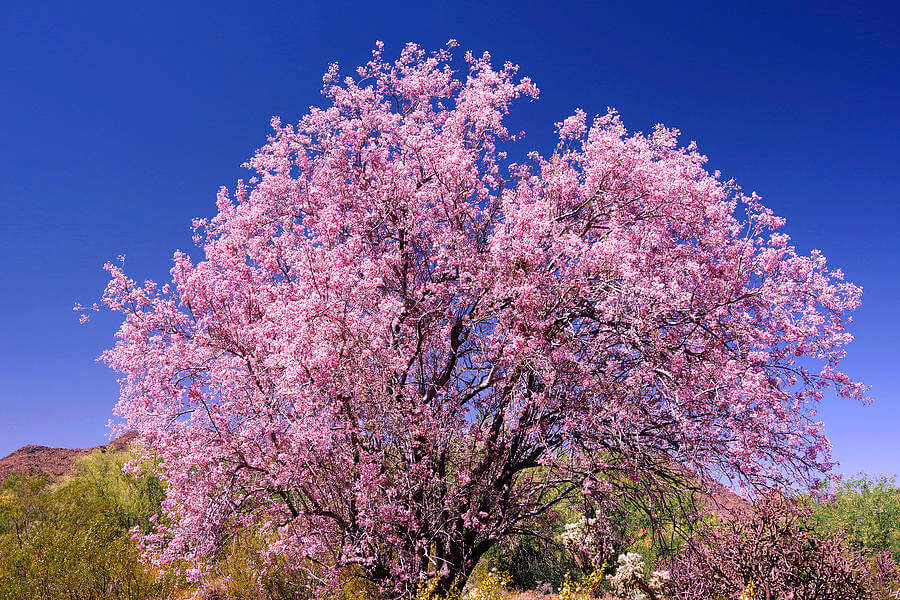
The Ironwood Tree, scientifically known as Olneya Tesota, is a small but resilient desert tree native to the Sonoran Desert.
It is renowned for its striking bluish-green leaves that provide a unique contrast in the arid landscape.
During early summers, the Ironwood Tree bursts into a riot of purple and red flowers, enhancing its allure.
These trees can be pruned to resemble a proper desert bush or grown as small shade trees.
Their name originates from the exceptionally durable hardwood they produce.
If you reside in a scorching desert climate, planting an Ironwood Tree in a shady area can be a wise choice for both aesthetics and practicality.
2. Palo Verde (Parkinsonia Aculeata)
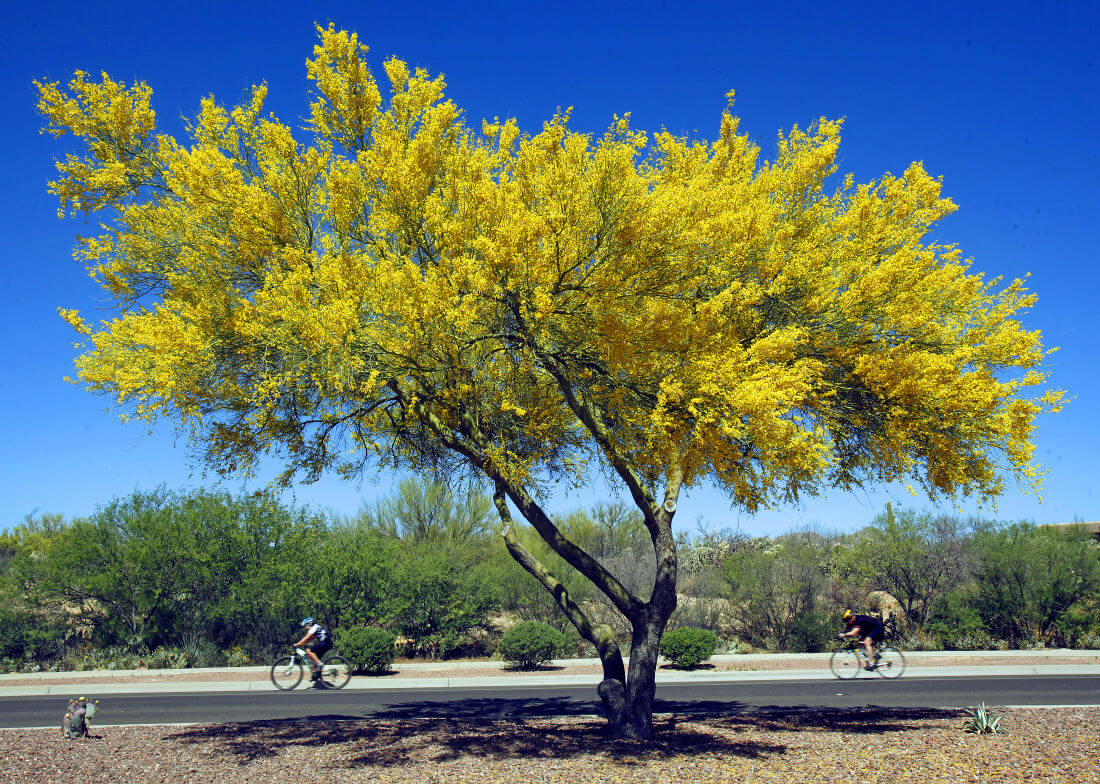
The Palo Verde, scientifically referred to as Parkinsonia Aculeata, is a popular desert tree known for its multi-branch canopy and greenish leaves.
This tree graces gardens with its yellow and white springtime flowers, infusing both color and fragrance into the landscape.
Despite being deciduous, its leaves fall during the autumn season.
Also recognized as the Jerusalem thorn, the Palo Verde is remarkably drought-resistant and adaptable to various environments.
It offers an ideal choice if you’re seeking shade for your yard in a desert climate.
3. Acacia Farnesiana (Vachellia Farnesiana)
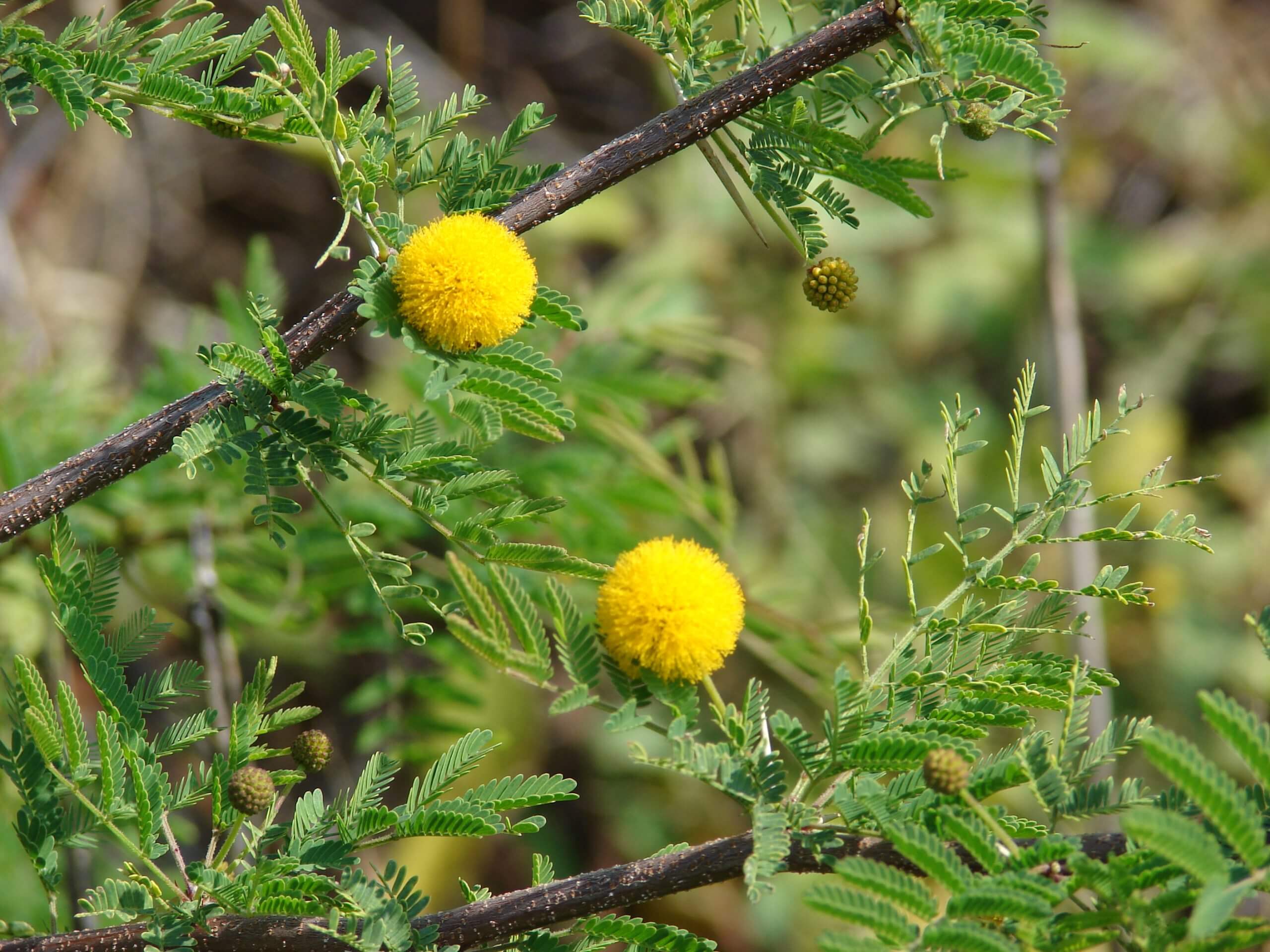
Commonly known as Sweet Acacia, Acacia Farnesiana is a medium-sized desert tree that thrives in the desert biome.
Growing up to 30 feet tall, this tree boasts a wide canopy that provides ample shade.
While it can be deciduous in some environments, it remains evergreen in others, retaining its leaves throughout the year.
One distinguishing feature of the Acacia Farnesiana is its spiky branches and delightful yellow flowers with a mesmerizing fragrance.
This desert tree is an excellent choice for those seeking both aesthetics and practicality in a hot and arid climate.
4. Shoestring Acacia (Acacia Stenophylla)
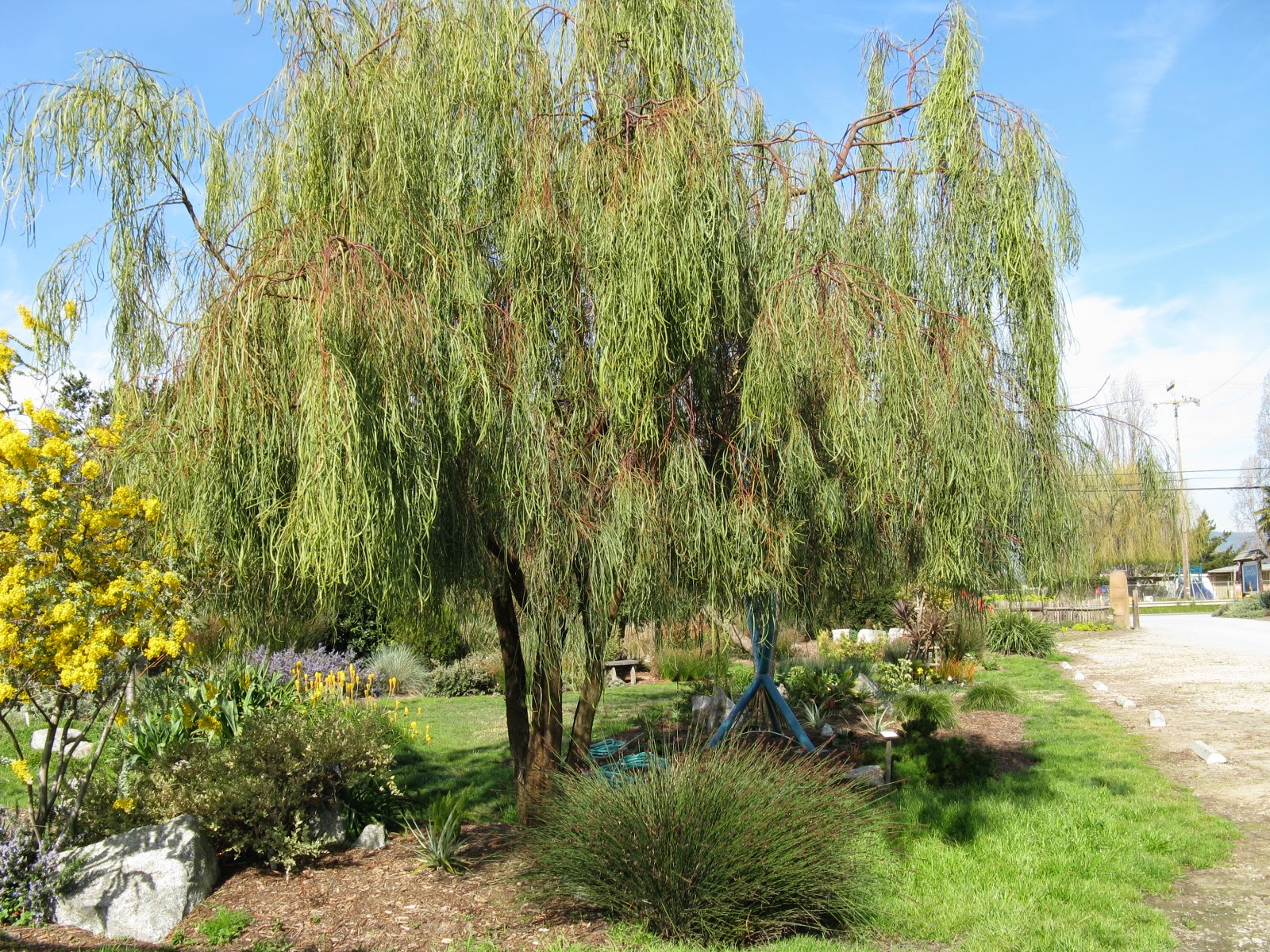
Shoestring Acacia is a tall desert tree with long, slender leaves.
This adaptable tree can reach heights of up to 33 feet and is known for its ability to thrive in intense heat while tolerating cooler temperatures as well.
While it is an evergreen tree, it may shed its leaves during drought seasons.
Proper watering during the summer months can help minimize leaf drop and keep your yard tidy.
With its distinctive appearance and ability to withstand harsh desert conditions, the Shoestring Acacia makes a valuable addition to desert landscapes.
5. Desert Willow (Chilopsis Linearis)

The Desert Willow, scientifically known as Chilopsis Linearis, is a delightful choice for those seeking a small tree with a bush-like appearance for their desert garden.
Despite its name, it is not a true willow tree, but its leaves resemble those of willow trees.
As with other desert trees, it is drought-tolerant and thrives in desert climates.
The Desert Willow boasts large trumpet-shaped flowers in shades of purple or magenta, adding a splash of color to your yard.
Its graceful appearance and adaptability make it a charming addition to desert landscapes, enhancing their beauty and appeal.
6. Catclaw Acacia (Senegalia Greggii)
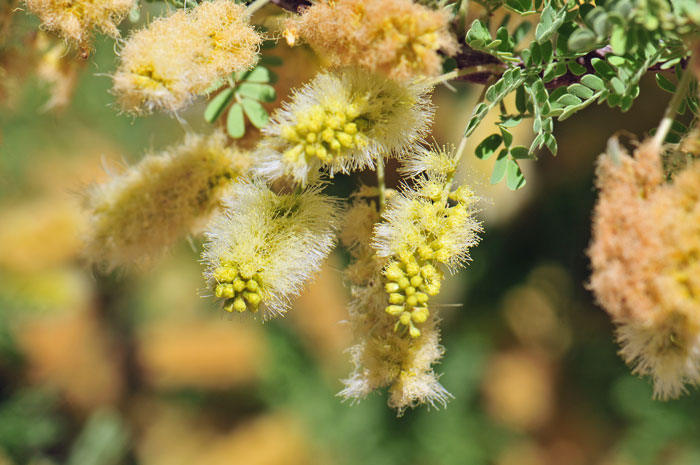
Catclaw Acacia, scientifically known as Senegalia Greggii, is also referred to as paradise flower and wait-a-minute bush.
This desert tree thrives in arid climates and is commonly found in the southwestern region of the country and Mexico.
It reaches a maximum height of about 10 feet, making it an excellent choice for smaller yards.
The name “catclaw” is derived from the hooked prickles on its branches.
In spring, this tree graces your garden with beautiful flowers that emit a sweet scent.
Notably, Catclaw Acacia can withstand extreme cold as well as scorching heat, making it a resilient choice for desert landscapes.
7. African Sumac (Rhus Lancea)
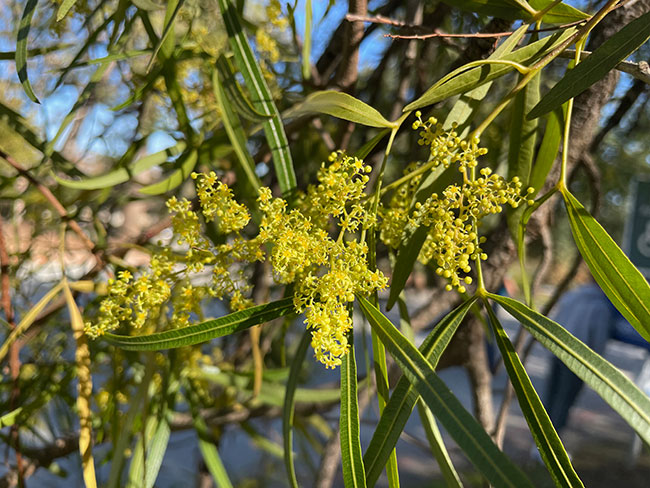
African Sumac, native to African deserts, is known for its drought-resistant capabilities.
This small, bushy desert tree features a shady canopy that can be pruned to maintain a manageable size.
Despite dropping its small pine-like leaves annually, this tree is an excellent choice for desert gardens.
While it may create some litter, you can repurpose the fallen leaves as mulch in your yard.
With its adaptability to different soil types and minimal watering requirements, African Sumac adds charm to desert landscapes.
8. Chaste Tree (Vitex Agnus-Castus)
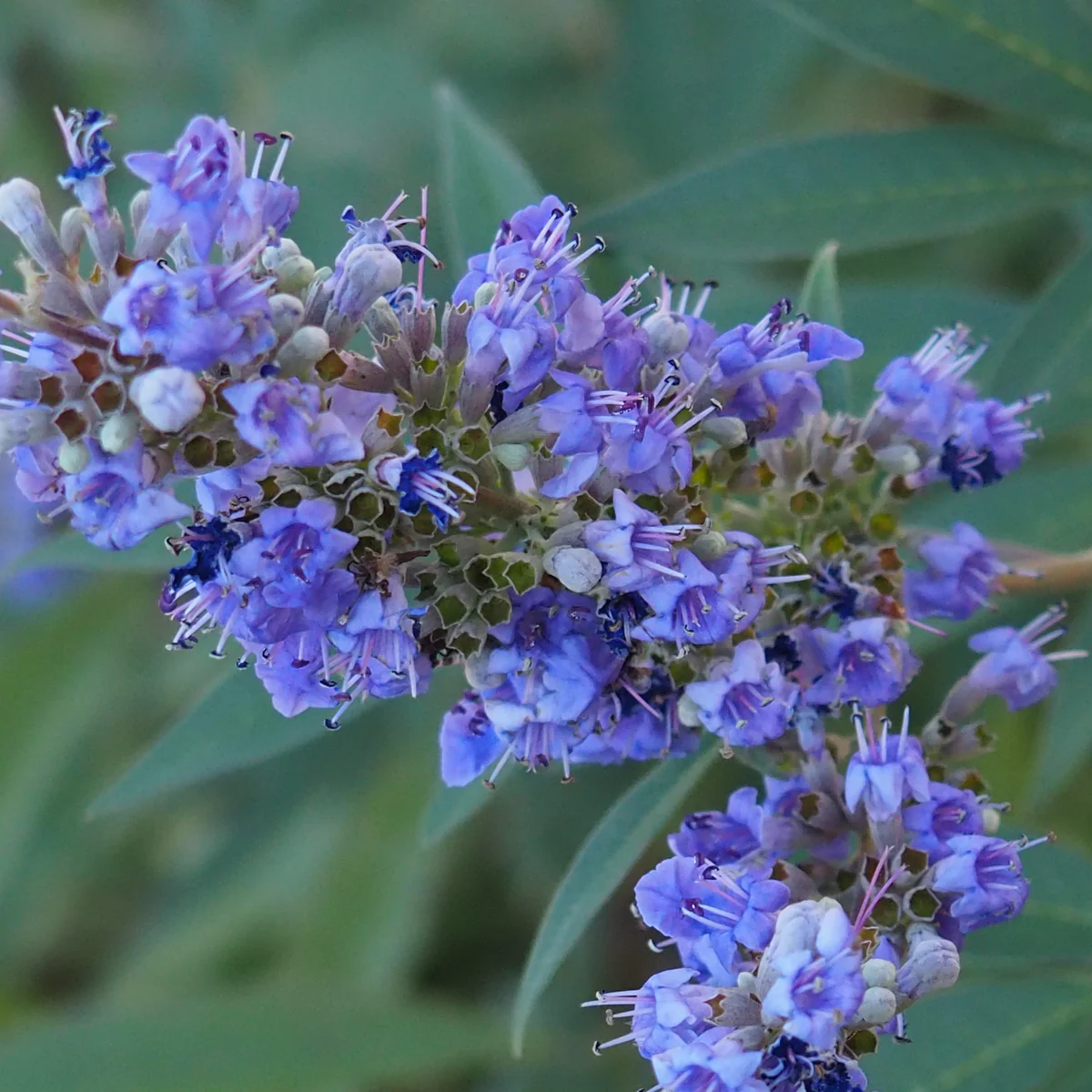
Chaste Tree, scientifically referred to as Vitex Agnus-Castus, is a medium-sized desert tree that thrives in Mediterranean regions and the southwestern part of the United States.
Its dense green foliage makes it a perfect choice for providing shade and respite from the summer heat.
This tree’s lush appearance and adaptability to desert-like climates make it a valuable addition to any garden.
Chaste Tree produces clusters of tiny pink and white fragrant flowers during the early spring season, enhancing the beauty of your landscape.
It is a popular choice for those seeking both aesthetics and functionality in their desert gardens.
9. Forman’s Eucalyptus (Eucalyptus Formanii)
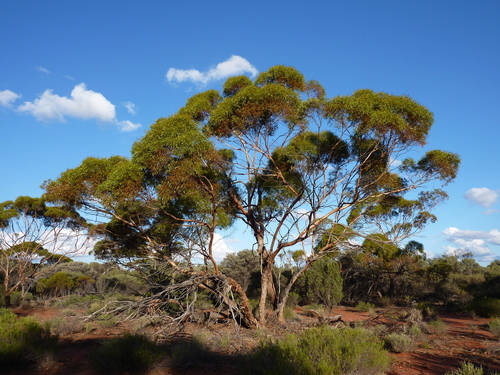
Forman’s Eucalyptus is a fast-growing desert tree known for its drought resistance and ability to thrive in hot conditions.
While it is one of the smaller eucalyptus species, reaching heights of up to 33 feet, it can still make a significant impact in a small yard.
This tree features a beautiful foliage crown at the end of its branches, adding to its visual appeal.
It’s an ideal choice for those seeking a desert tree that can withstand high temperatures and provide a unique aesthetic to their landscape.
10. Boojum Tree (Fouquieria Columnaris)
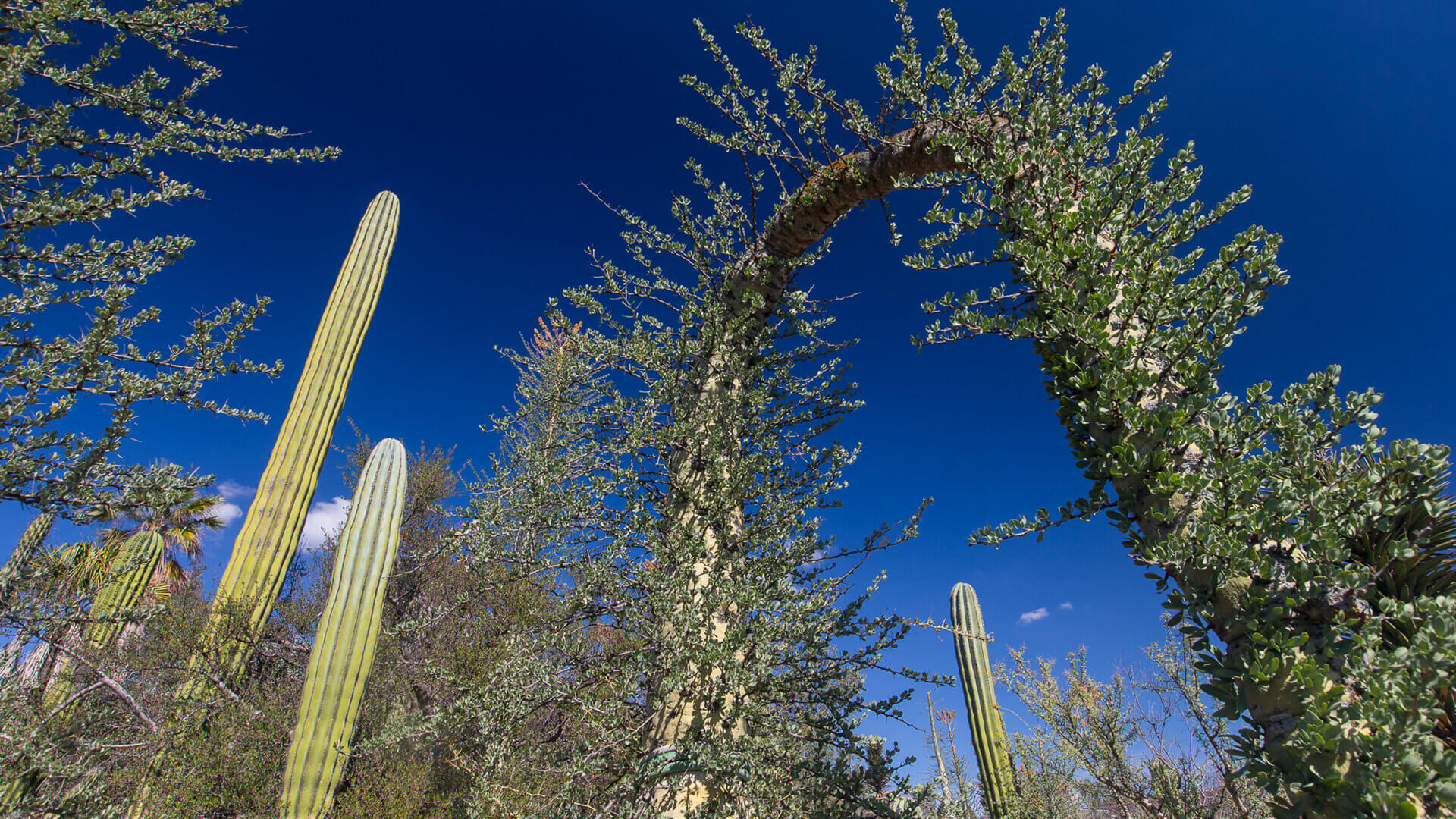
The Boojum Tree, native to the Sonoran Desert and parts of the Baja California peninsula, stands out with its unique appearance resembling a giant cactus.
It can grow up to an impressive 70 feet in arid conditions. During summer, the Boojum Tree adorns itself with white flowers that emit a delightful honey scent.
Its ability to thrive in extremely low-water environments and withstand high temperatures makes it a valuable addition to desert landscapes.
The Boojum Tree’s distinctive silhouette and resilience make it a captivating choice for those looking to create a desert garden with a touch of uniqueness.
11. Date Palm Tree (Phoenix Dactylifera)
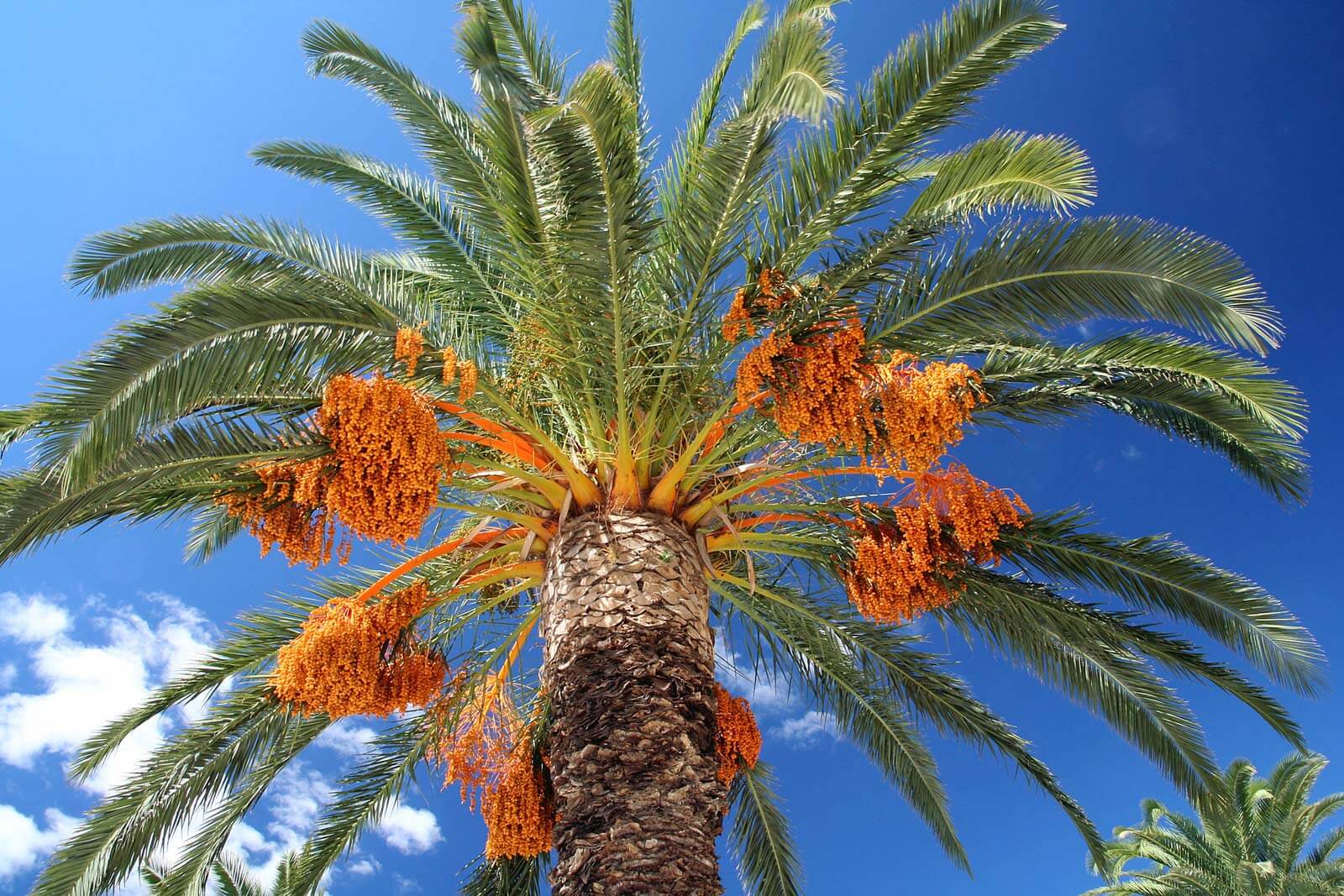
Date Palm Trees, specifically Phoenix Dactylifera, thrive in desert conditions, adding both beauty and functionality to your garden in arid climates.
While not all palm varieties are suitable for desert landscapes, Phoenix Dactylifera can endure arid and semi-arid regions, withstanding high temperatures.
These date palms are known for their resilience to scorching heat. It’s essential to note that they are sensitive to temperatures below 20°F.
If you seek a graceful and iconic addition to your desert garden, the Date Palm Tree is an excellent choice.
12. Texas Mountain Laurel (Dermatophyllum Secundiflorum)
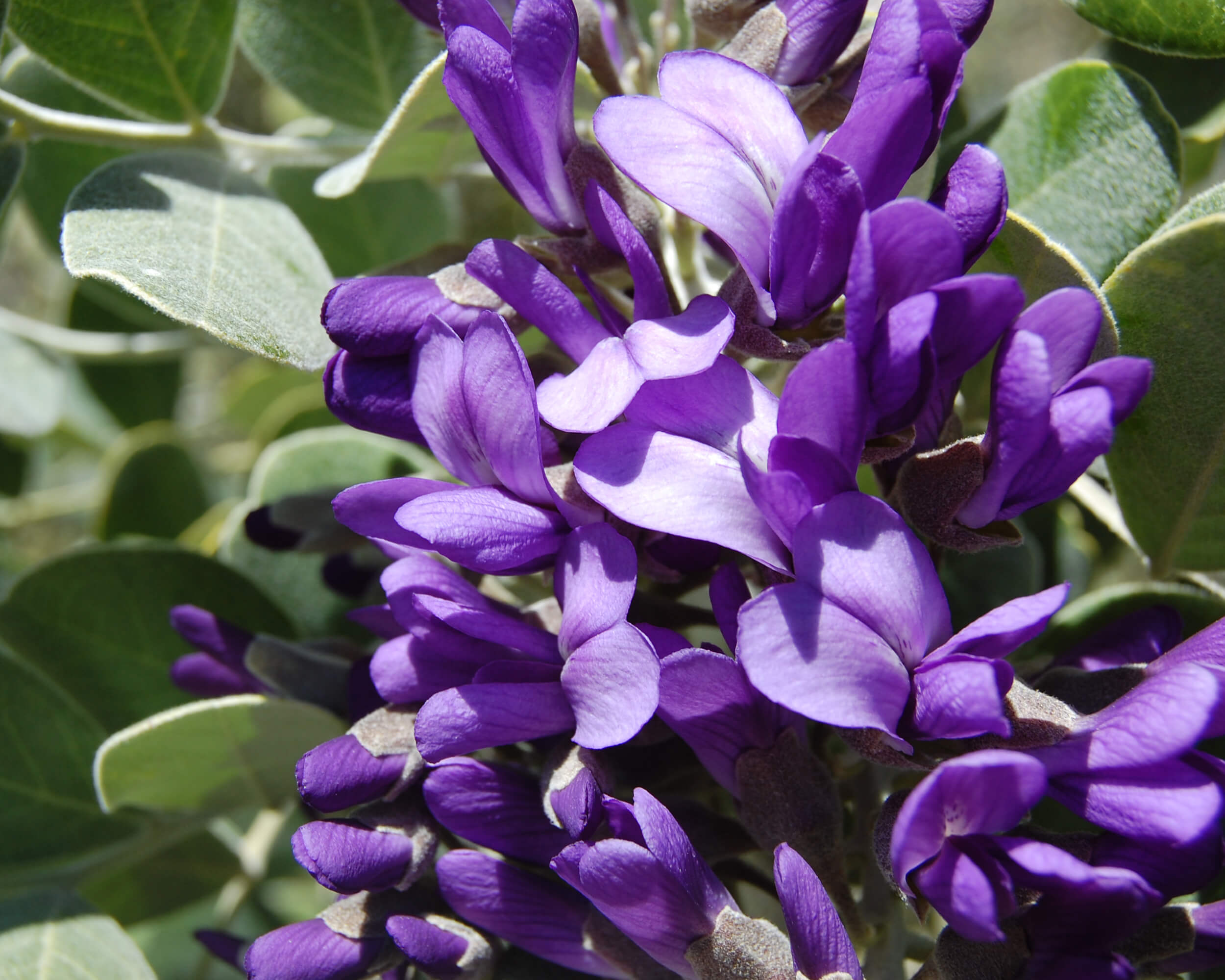
Texas Mountain Laurel, or Dermatophyllum Secundiflorum, is an outstanding small desert tree perfectly suited to arid climates.
Unlike many other trees, it remains evergreen, retaining its foliage throughout the year.
This characteristic, along with its lush purple flowers, adds charm to your desert landscape.
Growing slowly and requiring minimal maintenance, it adapts well to desert conditions.
Furthermore, Texas Mountain Laurel is versatile, thriving in various soil types and needing little watering.
Whether you have a small or large yard, this desert tree offers a lovely addition to your garden.
13. Texas Ebony (Ebenopsis Ebano)
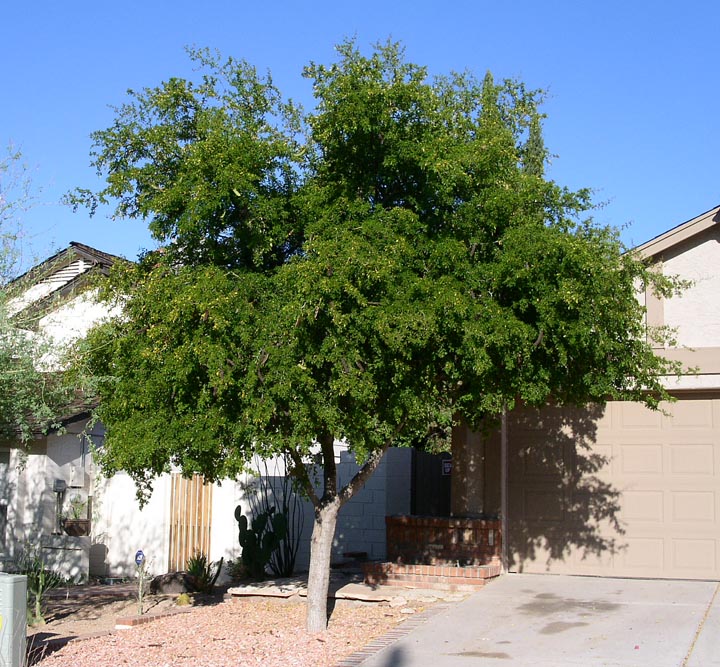
Texas Ebony, scientifically known as Ebenopsis Ebano, is a small desert-type tree known for its dense foliage.
It’s an ideal choice for those with limited yard space, as it grows to a modest height of around 25 feet with a spread of 8-15 feet.
During the summer, this tree produces clusters of white puffy flowers, enhancing its appeal.
Texas Ebony’s dense foliage can be utilized to create a privacy screen in your garden.
Be aware that it can get somewhat messy during the autumn and spring seasons as it sheds its leaves.
14. Sand Palm (Allagoptera Arenaria)
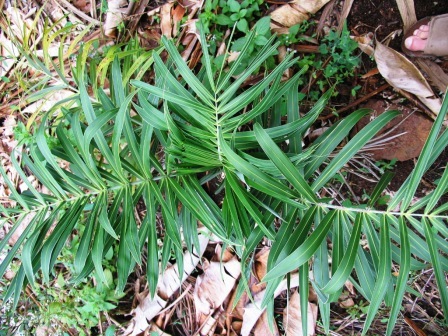
Sand Palm Trees, specifically Allagoptera Arenaria, are excellent choices for small yards in arid regions.
These palm trees reach a maximum height of about 6 feet, making them perfect for compact spaces.
Their feather-like leaves emerge from the ground, growing in an upward direction and forming an attractive arch.
Although they belong to coastal regions, their drought-resistant and heat-tolerant qualities make them suitable for desert gardens.
Sand Palms offer a unique and visually appealing addition to your arid landscape.
15. Tipu (Tipuana Tipu)
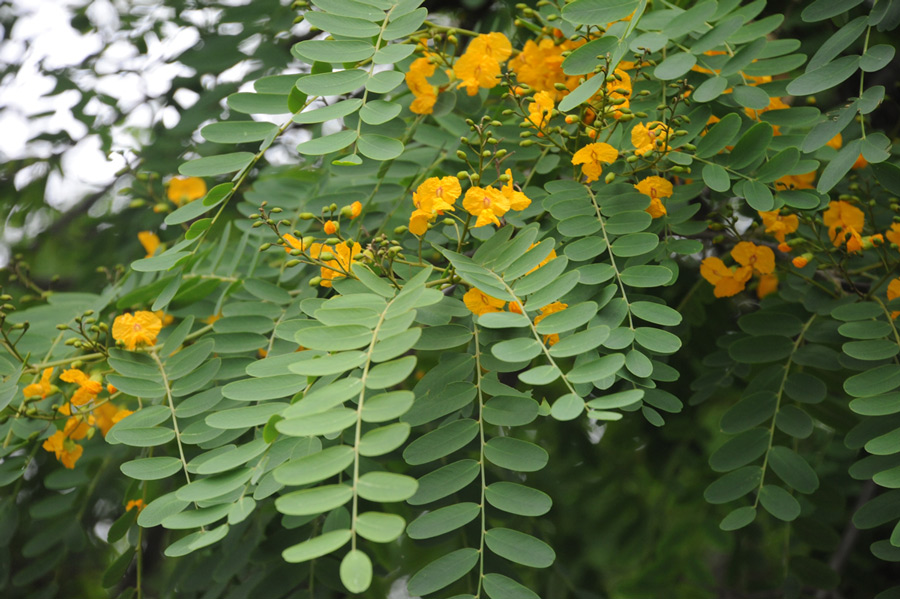
Tipu, scientifically referred to as Tipuana Tipu, is a fast-growing desert tree that can attain heights of up to 100 feet with a width of 65 feet.
This tree is substantial, making it suitable for large backyards. During the summer, it showcases beautiful orange-yellow flowers that add vibrancy to your garden.
Tipu is a deciduous tree, shedding its leaves during the winter and spring, which may result in some mess in your garden.
If you have ample space and desire a grand tree that provides ample shade and stunning aesthetics, Tipu is an excellent choice.
Be prepared for occasional clean-up during leaf fall seasons.
16. Sissoo (Dalbergia Sissoo)
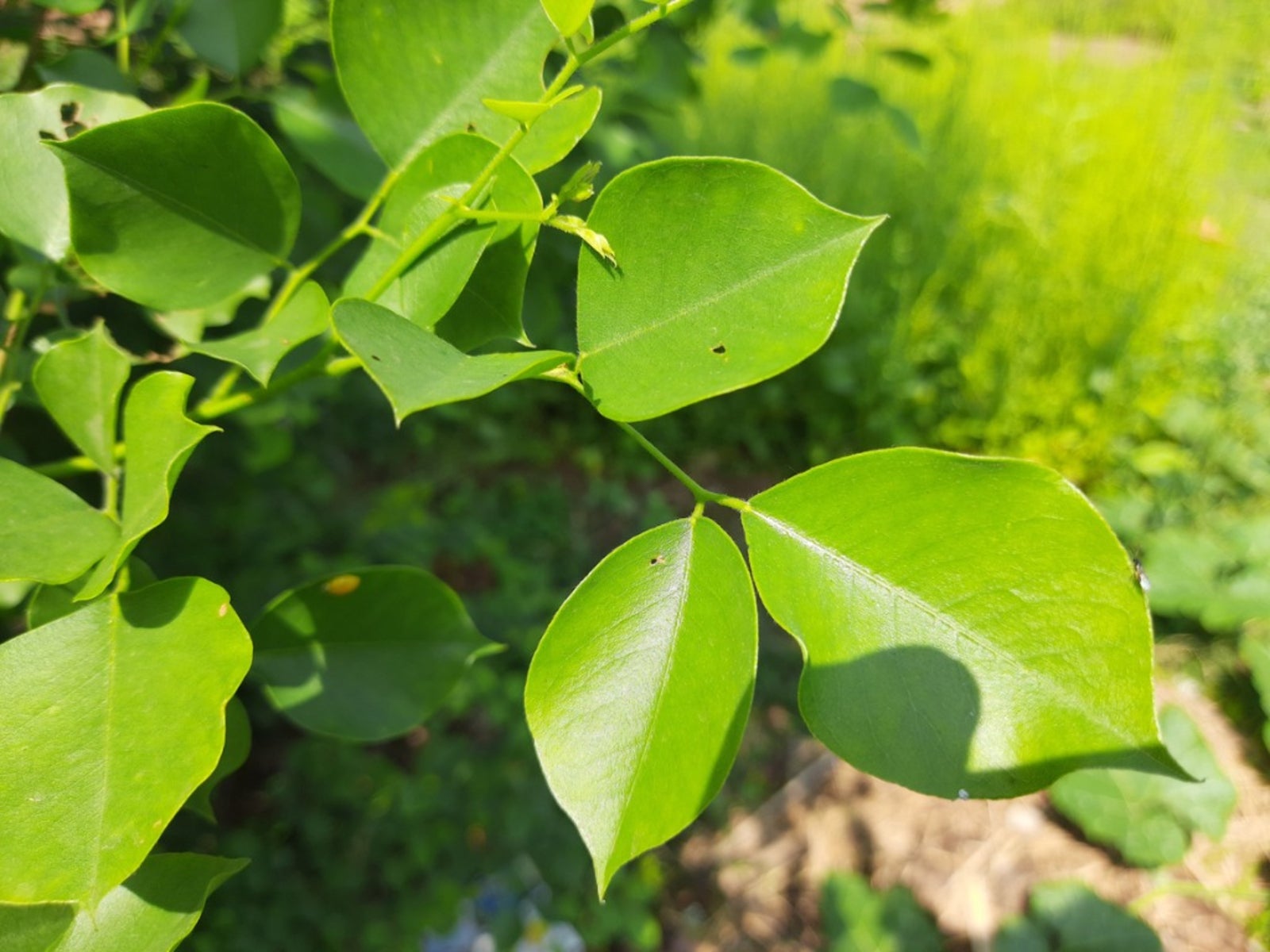
Sissoo, scientifically known as Dalbergia Sissoo, is a popular desert tree often referred to as North Indian Rosewood.
Thriving in full sun and high temperatures, Sissoo is an excellent choice for expansive desert gardens.
Its appearance resembles that of an aspen tree, with the ability to grow up to 82 feet in height.
During early spring, clusters of tiny pink and white fragrant flowers adorn this tree, adding charm to your garden.
It’s essential to note that Sissoo can be a bit messy, with its leathery leaves falling during the summer.
Additionally, its extensive root system may cause damage to sidewalks and nearby buildings, so it’s best suited for spacious yards.
17. Acacia Bailey (Acacia Baileyana)
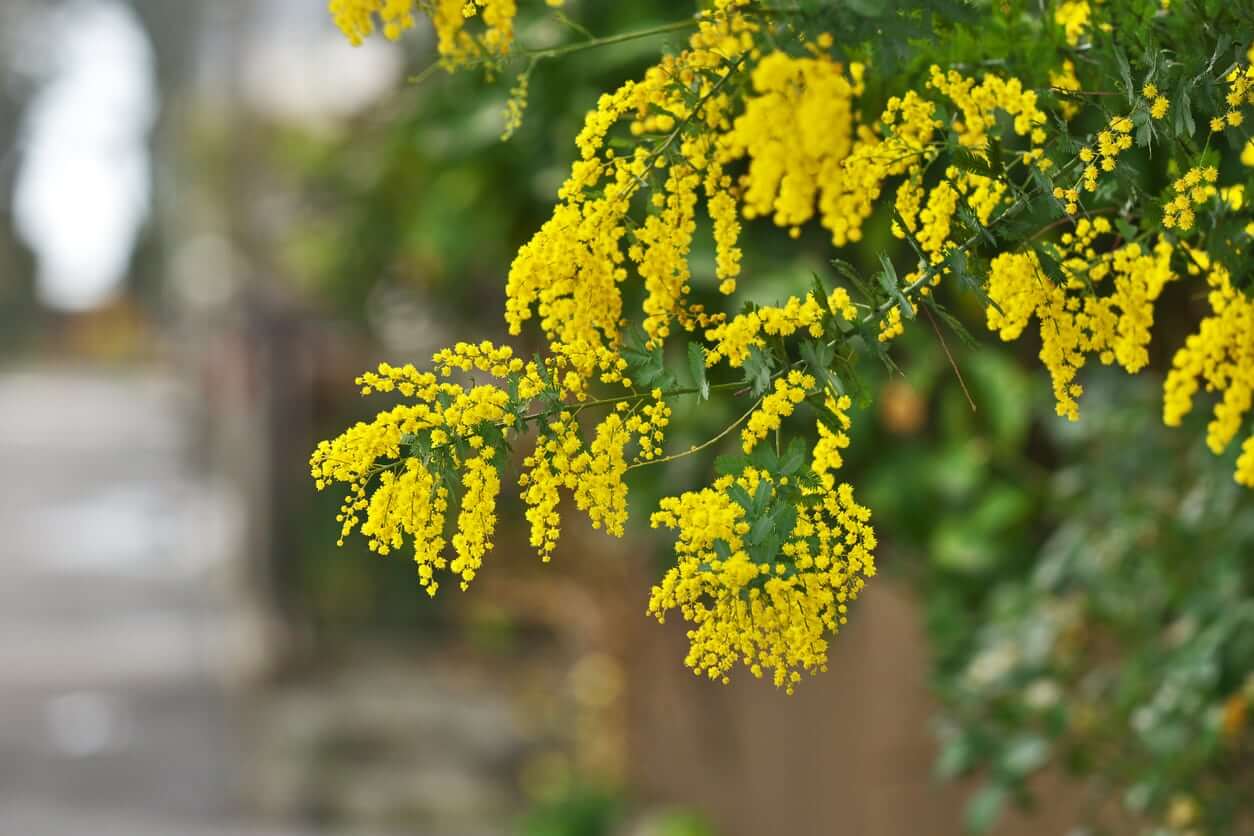
Acacia Baileyana, with its feather-like leaves and ornamental design, is an excellent choice for a desert garden.
This tree, known for providing ample shade, is heat-tolerant and requires minimal maintenance.
It can be planted in fertile soil and flourishes in full sun. During early spring, Acacia Baileyana graces your garden with clusters of golden-yellow flowers that emit a delightful fragrance.
These flowers grow in clusters and enhance the tree’s allure. Whether you’re seeking an elegant shade tree or an ornamental addition to your desert landscape, Acacia Baileyana is a versatile choice.
18. Chilean Mesquite (Prosopis Chilensis)
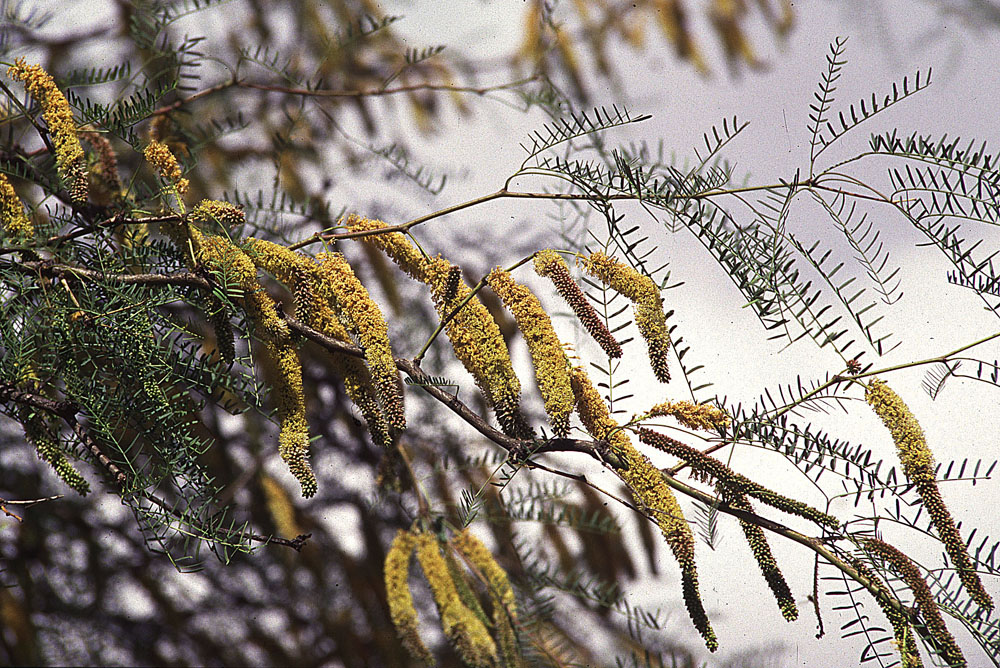
The Chilean Mesquite, or Prosopis Chilensis, is native to the Arizona desert and select Southwestern states.
Its standout feature is its broad canopy, providing ample shade in your desert garden.
If you desire a fast-growing tree, this is an excellent choice, as it can reach heights of up to 46 feet.
This tree boasts pinnate-shaped leaves and yellowish flowers that typically bloom in early winter.
Chilean Mesquite is renowned for its drought resistance and adaptability to arid climates, making it a popular choice for desert landscapes.
19.Texas Olive (Cordia Boissieri)
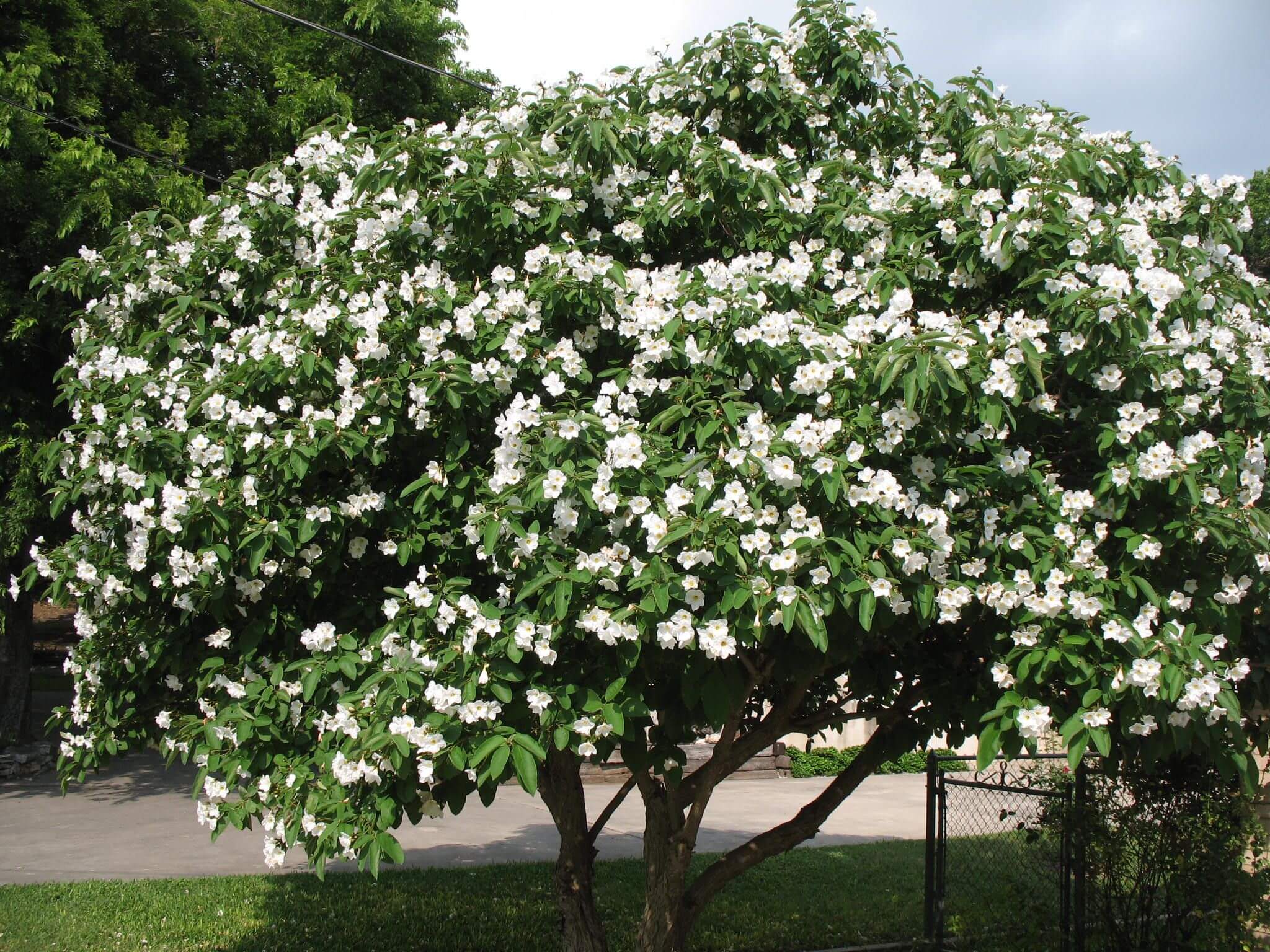
Despite its name, Texas Olive, or Cordia Boissieri, isn’t a true olive tree but belongs to the Boraginaceae family of shrubs.
This small desert tree features large, lush green leaves and thrives in full sun.
It’s an ideal choice for smaller yards and remains evergreen, retaining its leaves throughout the year.
Texas Olive produces white flowers year-round, contributing to its visual appeal.
With an average lifespan of 30 to 50 years, this tree is a long-lasting and heat-tolerant addition to your desert garden.
20. Palo Brea (Cercidium Praecox)
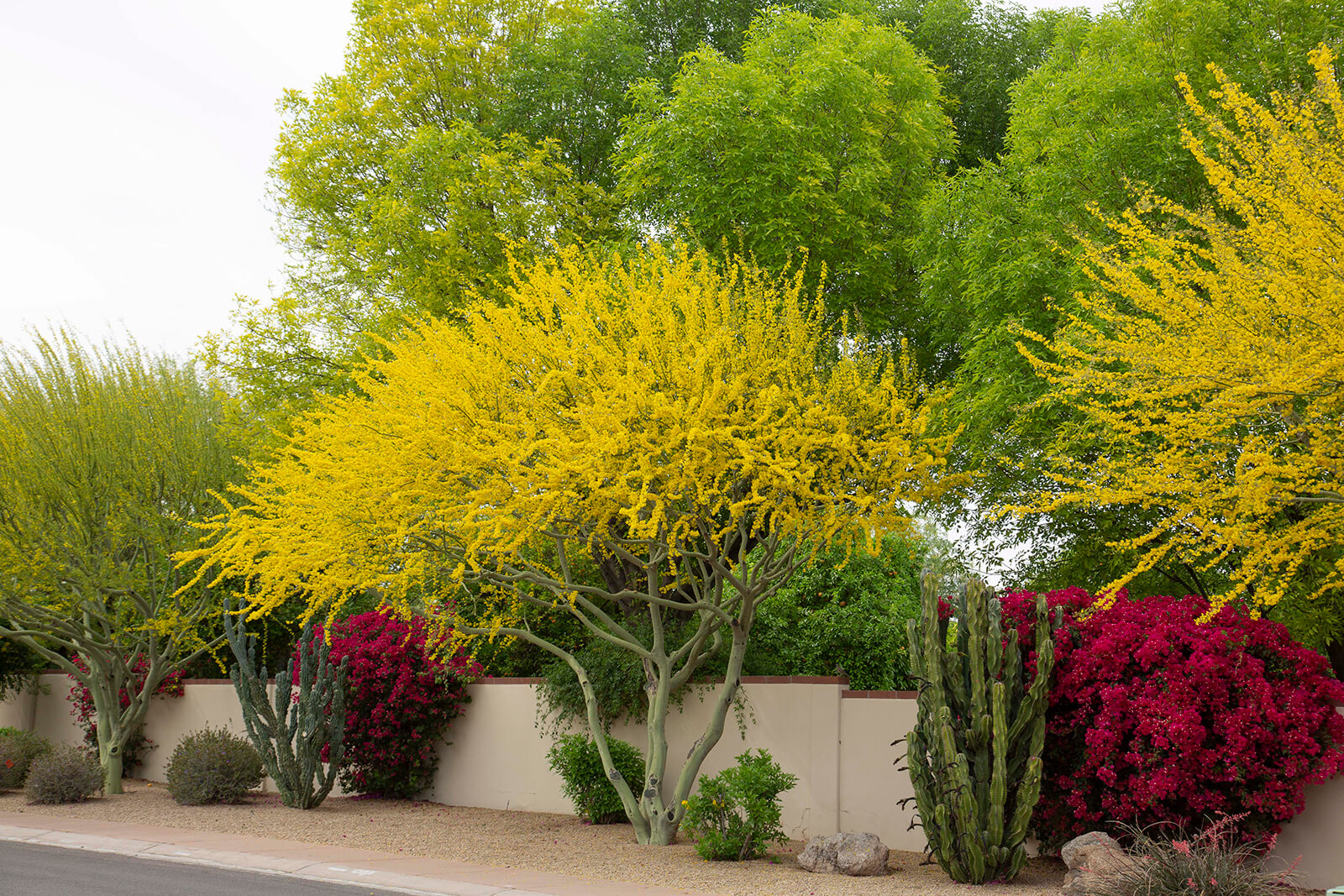
Palo Brea, scientifically known as Cercidium Praecox, can be categorized as a large shrub or a small desert tree.
It grows to heights ranging from 16 to 40 feet. During mid-spring, Palo Brea bursts into a stunning display of yellow flowers, transforming the tree’s appearance.
It adopts an umbrella-like growth pattern, providing shade beneath its branches.
Palo Brea excels in desert conditions with low rainfall, sandy soil, and full sun exposure.
Its deciduous nature means new leaves emerge after rainfall, contributing to its unique charm.
This tree’s ability to thrive in arid climates makes it a valuable addition to your desert garden.
21. Joshua Tree (Yucca Brevifolia)
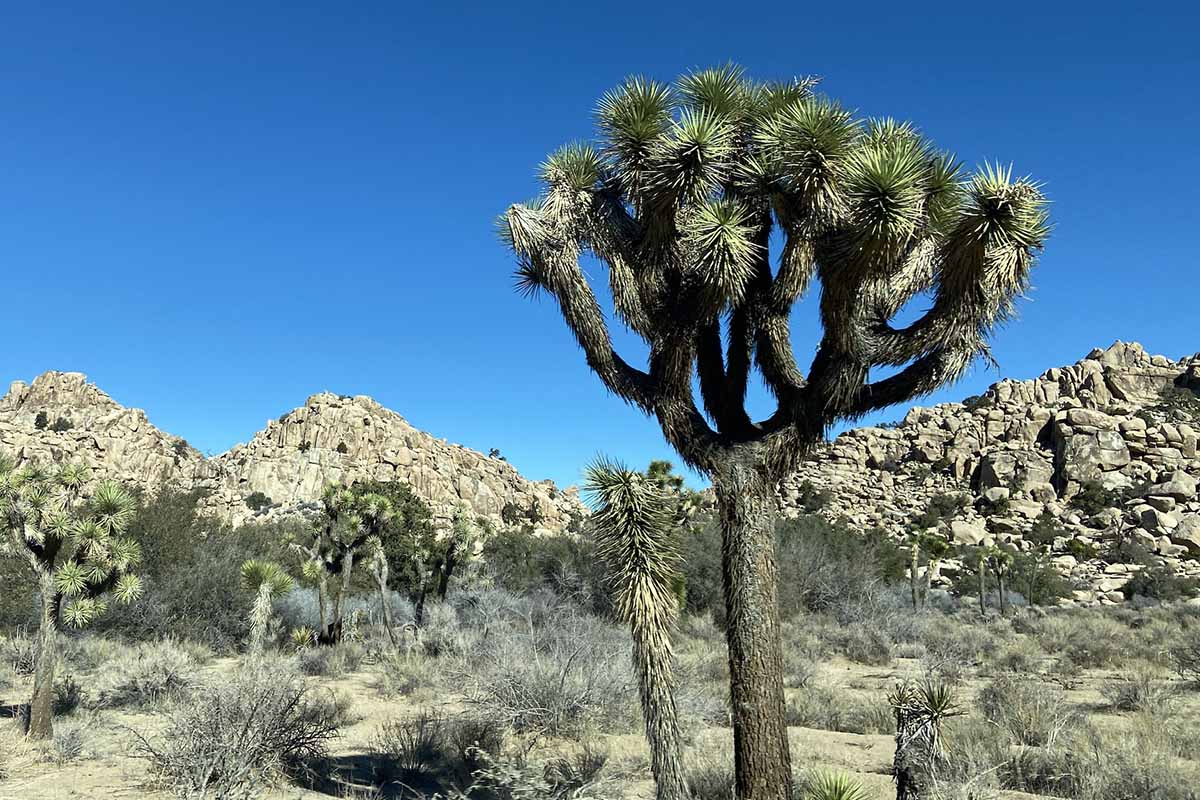
The Joshua Tree, scientifically known as Yucca Brevifolia, is a unique desert inhabitant.
It’s important to note that Joshua Trees aren’t actual trees but belong to the succulent family.
Characterized by thick stems and spiky ball-like leaves at the end of branches, these trees have a remarkable ability to absorb water after rainfall.
They possess an extensive root system, delving as deep as 36 feet underground.
During the summer season, Joshua Trees produce an array of white flowers, enhancing their appearance. Medium-sized Joshua Trees typically reach heights of around 70 feet.
These distinctive desert dwellers are hardy and well-suited for arid environments.
22. Mastic Tree (Pistacia Lentiscus)
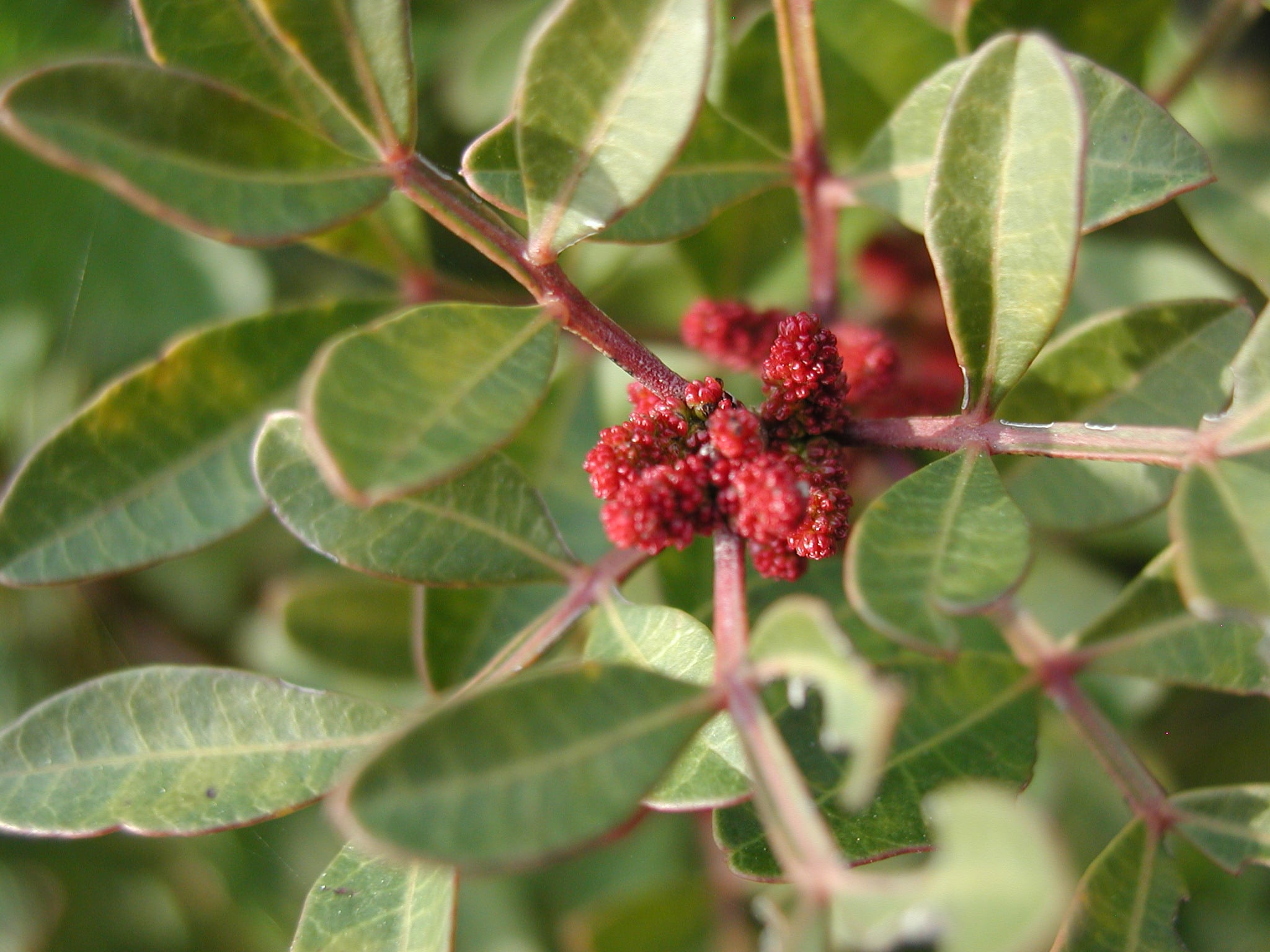
The Mastic Tree, scientifically known as Pistacia Lentiscus, is a desert tree recognized for its lush, evergreen foliage.
Unlike many desert trees, it retains its leaves throughout autumn and winter. This tree boasts a unique ability to survive without water for extended periods.
The name “Mastic” comes from a resin used in gum production and as a thickening agent.
Growing to heights of up to 13 feet, the Mastic Tree is suitable for both privacy screens and dwarf tree applications.
Its adaptability to harsh desert conditions and resilience make it a valuable asset in your desert garden.
23. Guajillo Acacia (Senegalia Berlandieri)
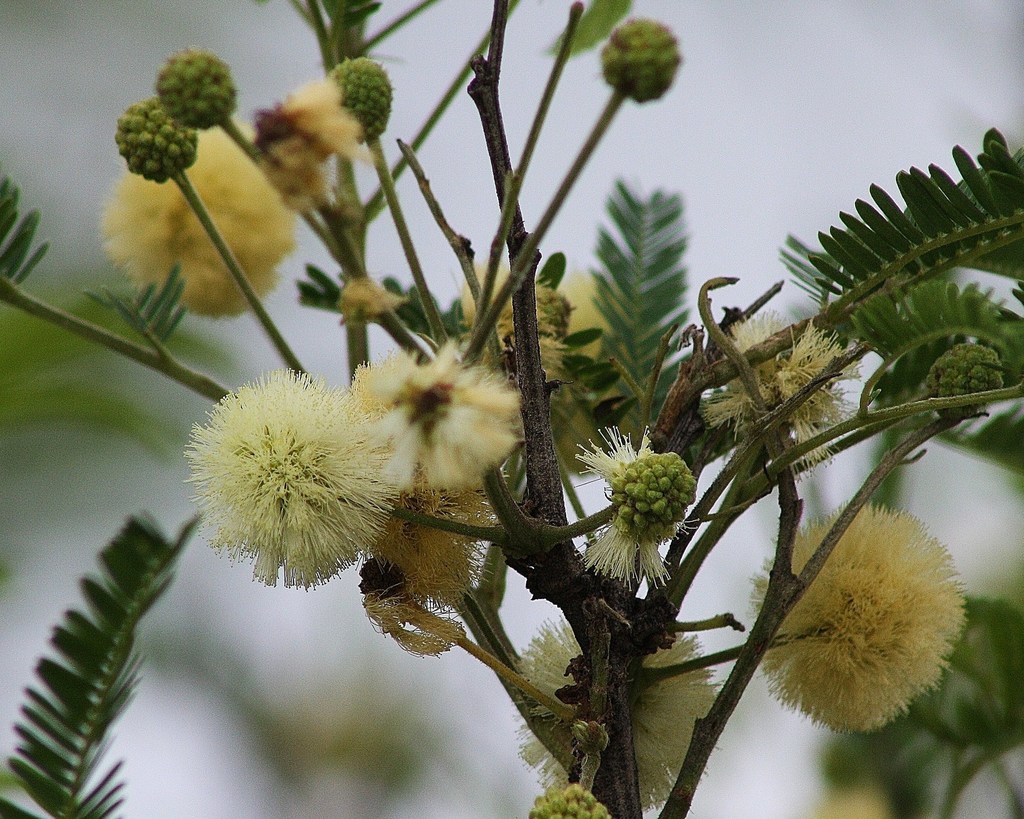
Guajillo Acacia, scientifically known as Senegalia Berlandieri, is a popular desert tree commonly found in Texas, Arizona, and the broader Southwestern region of the United States.
It serves as an excellent ornamental tree and attracts pollinators with its creamy white flowers.
What sets Guajillo apart is its minimal water requirements and adaptable size, which can range from a large shrub to a small tree, depending on pruning.
The leaves of this tree are fine and lacy, resembling those of a mimosa.
Guajillo can withstand harsh desert climates and endure temperatures as low as -15 degrees, making it a resilient choice for your desert garden.
24. Mulga (Acacia Anura)
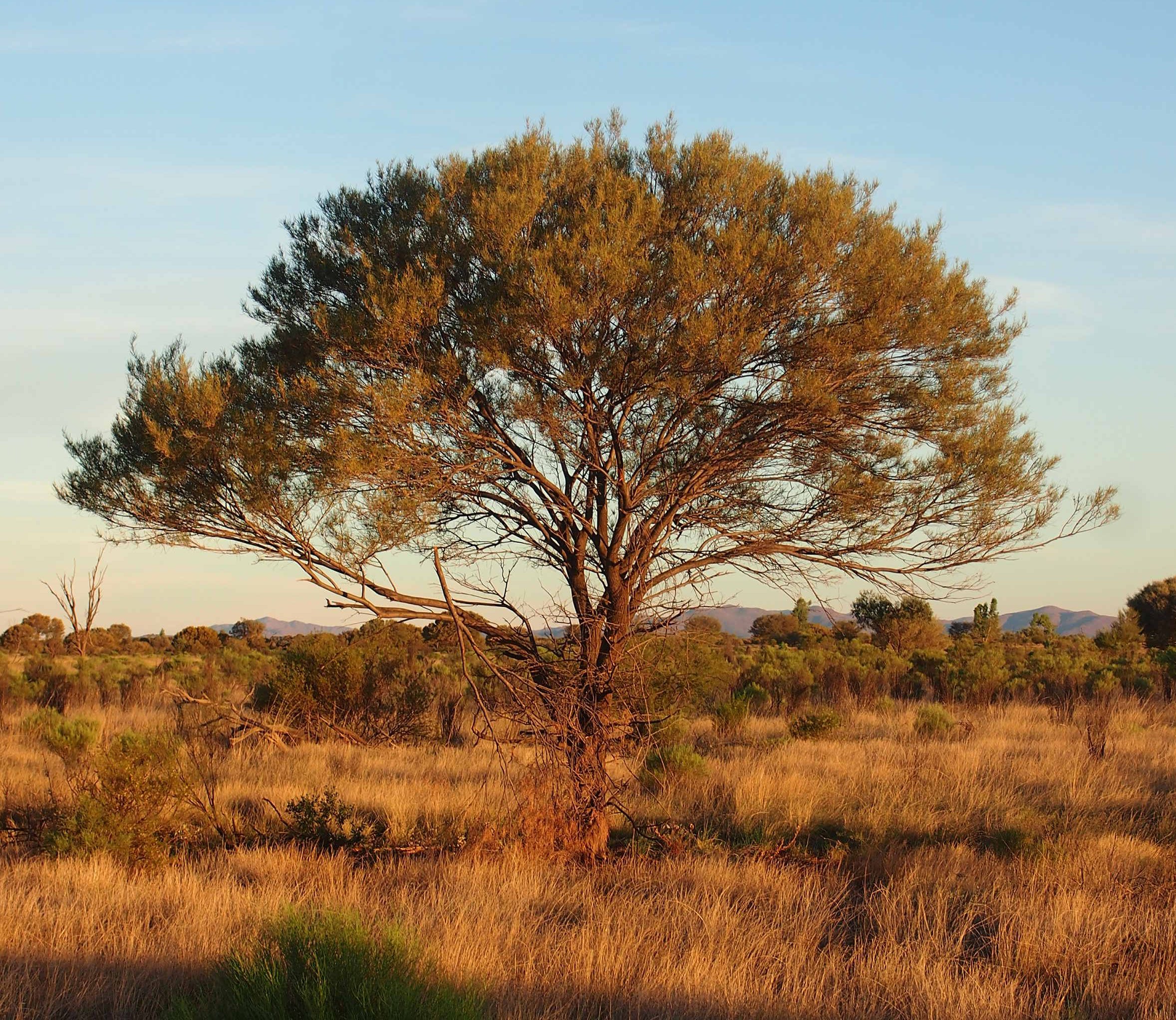
If you’re seeking a desert tree for your patio or pool area, Mulga, scientifically known as Acacia Anura, is an excellent choice.
It thrives in high heat, and during late spring, it’s adorned with stunning yellow flowers.
Mulga is known for producing minimal litter, and its foliage remains on the branches year-round.
Its adaptability to arid conditions and heat tolerance make it an ideal addition to your desert landscape.
This small desert tree will enhance the beauty of your garden while requiring minimal maintenance.
Conclusion
In the scorching heart of deserts, where dry air, sandy soil, and meager rainfall dominate the landscape, desert trees emerge as unsung heroes.
Their ability to withstand extreme heat, hold onto precious moisture, and flourish amidst challenging conditions is nothing short of miraculous.
From the Sonoran Desert to the Great Basin, these resilient “desert tree names” offer a lifeline to fragile ecosystems.
The diversity among desert trees, ranging from the majestic Ironwood Tree to the petite Sand Palm, is a testament to nature’s adaptability.
These trees not only enhance the aesthetic appeal of arid regions with their vibrant colors and unique foliage but also serve as vital components of the ecosystem, supporting desert wildlife and conserving precious soil.
In a world where water is scarce, these trees stand tall as symbols of life’s unyielding persistence.

